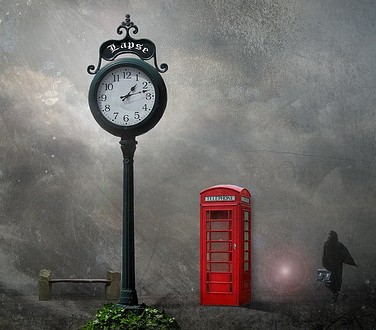Layering Motifs in Your Novel for Powerful Effect
When our beach house fell off a cliff due to El Nino years ago, we felt a horrible sense of loss at this sudden catastrophe. We had been married on the back deck, and the spot we’d stood upon and said our vows now hung out sixty feet in the air, a hundred feet above the roaring surf. In combing the beach after the disaster, I picked up one brick from the fireplace that we’d spent many long, peaceful hours in front of, watching the crackling fire and listening to the pounding surf.
I kept that brick on my kitchen window sill for years, and you can imagine the symbolism it held for me—and not just reminding me of my loss. For it also symbolized for me that something solid was salvaged from the wreck of my house (and of my family, which suffered massive emotional destruction). Seeing it gave me resolve, comfort, inspiration.
Objects in your novels can do likewise for your characters when you tie them in with key events in their past.
So you can start, perhaps, with an object that serves as a key motif in your story, then try to take it further. Explore this object in your mind and see what ideas it sparks. We discussed last week about using word associations. Think of emotional associations you can generate for this object (for your character) that will serve your plot and your character’s goal. What kind of object can symbolize persistence for him? Or represent an obstacle? What note would your character write and stick on his fridge to keep him going?
Secondary Characters Can Introduce a Motif
I try to come up with at least four or five motifs for every novel I write. I think of an object or two to work with, as well as a few key words or phrases that I have characters repeat either in speech or in their heads or both. Often a secondary character who serves as an ally to the protagonist will be the one to impart words of wisdom and advice, and this is a good opportunity to come up with a special phrase (and if possible, associated with some object) that can then be an important motivator for the protagonist.
In my sweet historical Western romance Colorado Promise (written under my pen name Charlene Whitman), I had a secondary character tell my protagonist that people in their town had a saying (I found this via my research, and it was perfect for the motif I had in mind for my book): “Bloom where you’re planted.” Since I had my botany-loving heroine take out west a special plant she loved, I repeated the motif and symbolism of both the plant (object) and the concept (growth, thriving, withering, adaptation) in various scenes, including the last wrap-up scene, which shows her finally planting the small tree in Colorado soil so it can “bloom where it’s planted.”
So think about a secondary ally character that can give advice or insight in a way that will introduce or reinforce a motif in your story.
Motifs Add Richness to Characters
In my novel Intended for Harm, I gave each of my seven main POV characters a motif. Each character was developed around a natural element. Jake was wood, Leah was water, Reuben was rock, Simon was fire, Levi was metal, Dinah was air, and so on. From this idea came multiple levels of motifs. Simon had a fiery temper. He smoked all the time. He embodied anger due to the specific hurt and rejection he suffered. He set the bed on fire. Reuben, the firstborn son, was the rock of the family. He loved to rock climb. He was also the big obstacle (rock) in the way for his mother. I had a great time playing one element off another. For Leah (water) was the only one who could calm Simon and take the fire out of him, whereas Simon’s “fire” kept setting his father (wood) aflame with anger.
This may seem way over the top, but to me, using these elements as rich motifs and symbols helped me write what I feel is my best novel. These elements, please note, were not randomly chosen. They inspired some of the characters’ traits, but they worked purposefully in my story. Otherwise I wouldn’t have used them.
So don’t choose random objects or words for motifs just because they’re catchy or unusual. Motifs need to serve the plot, and tie in carefully with your themes.
Think about your characters and their personalities. Is there an object that can emphasize a key trait? Give insight into your character? Something they look at or hold that keeps them going, keeps them plodding despite pain and opposition to their goal?
If you take the time to bring these motifs into your story, you won’t regret it. Your plot might not necessitate a motif, but I highly encourage you to consider building this pillar of novel construction. If done well, it can only help to make your novel more solid, substantial, and memorable.
And . . . It’s a Wrap!
Believe it or not, we’ve now covered all twelve key pillars of novel construction! You have below all your inspection checklists. Print them out and use them to closely examine your novel structure. If you can answer all 144 sets of questions to your satisfaction (and be hard on yourself!), your novel will bear the weight of scrutiny. With twelve strong, solid pillars, you can’t help but build a lasting, memorable novel.
In the last couple of weeks of this year, I’m going to review some key points about each pillar and share some last insights on this whole topic of novel construction. Be sure to bring any questions you have and share what has helped you the most in this course this year.
Any thoughts on motifs? Have you come up with a great one or two for your novel? If so, share what it is and why and how it works in your story.
Inspection Checklists:
Inspection Checklist 1-concept with a kicker
Inspection Checklist 2-protagonist with a goal
Inspection Checklist 3-conflict with high stakes
Inspection Checklist 4-theme with a heart
Inspection Checklist 5-Plots and Subplots in a String of Scenes
Inspection Checklist 6-Secondary Characters with Their Own Needs
Inspection Checklist 7-Setting with a Purpose
Inspection Checklist 8-Tension Ramped to the Max
Inspection Checklist 9-Dialog Compressed and Essential
Inspection Checklist 10-Voice Unique for Each Character
Inspection Checklist 11-Writing Style Concise and Specific
Inspection Checklist 12-Motifs for Cohesion and Depth
Photo Credit: Dirigentens via Compfight cc








Great stuff. Thanks for all your advice and help. Wishing you a relaxing holiday time and
a prosperous New Year.
Back at you!
In my novel (now in its second draft,) I use birds as a motif for the growth of my main character, Yeshua, a.k.a. Jesus. (Yes, that Yeshua!) In the prolog, thirty years after Yeshua’s death, it ends with two of his followers watching the beauty of the patterns a huge flock of birds create on the horizon.
When Yeshua is a child, and feeling trapped in Nazareth, he has found a sparrow with a broken wing that he keeps in a wooden box.
As Yeshua grows, he runs to India. He constantly comes across birds that are becoming startled and flying away.
In India, as Yeshua grows and becomes more and more confident, he sees peacocks who are admired for their beauty by the people, and who do not seem to be at all frightened by humans.
At the end of the story, when Yeshua foresees his fate, yet chooses to stay in Jerusalem, he comes across a rooster whose owner lets run wild. (The original free-range chicken!) He tells Yeshua that the bird does not have clipped wings, and could leave whenever it wants, but it chooses to stay.
And finally, after Yeshua’s crucifixion, the antagonist, who was instrumental in Yeshua’s demise, is out hunting, and an eagle is flying overhead. After circling a few times, it leaves to find fish. The antagonist feels a presence and looks up, but only sees blue sky.
Thank you for sharing these twelve pillars, Susanne. This course has been very useful. Happy holidays to you and your family.
These are great uses for your motif! And thanks for the kind words 🙂
Susanne, this is just to say thank you for all the invaluable advice that you have offered so generously in these posts. The tips are insightful, practical and for me have been a tremedous resource – and the best I have found online, or anywhere, come to that!
As I forge ahead in the coming months with revisions, I’ll be referring back to each one of the 12 checklists.
Wishing you a happy and hopefull relaxing festive season!
warm regards,
Piper
Thanks, Piper, and you too! I’ll be putting this out as a book along with a useful workbook in March, adding in a whole lot more examples and explanation on these pillars. Watch for it!
Dear Suzanne,
I want to thank you profusely (the dreaded adjective) for having taken your time to write this blog over the past year and I do look forward to see it in print. I am working my way through your Story with a Heart and have already done some revisions on my first chapter of my first novel and am trying to add layers to my characters in the second novel. It is hard work trying to flesh out your characters with motivations. I thought I had dug deep but not deep enough it seems.
As for motifs, water features widely in my first novel and symbolizes freedom, whether it be escape by ship or the freedom of swimming. As for my second, I realized today after reading your chapters on characterization, that escape is one of my main themes once again but will have to work harder at creating that past hurt that creates that greatest fear and the lie that they believe about themselves.
Thanks again and wishing you a relaxing, stress free holiday.
Thank you so much for your wise words during this past year! I shall look out for your book in March. I participated in NaNoWriMo for the first time ever and now have over 54,000 words of a novel that I thought would never be written. I’ve tried to keep your pillars in mind as I wrote it but now need to look at it again and tie everything together. So far I only have one motif – a wooden giraffe as a symbol of one of my main characters deciding to work on an African game reserve after being made redundant. I have another six characters and while I probably won’t give them all a motif – though I might! – I will definitely introduce some for at least two of the others.
Thank you, and I wish you a Happy New Year. Thanks for all the inspiration! x
Thanks for the kind words. I’m glad this course has helped you! Happy New Year to you too!
Thank you for this article and i will definitely be working through the questions in order to review my two novels I am working on. The motif is a one cent copper coin handed to my main character as a child. The coin has no value except for the copper it is made from. The two sparrows etched into the coin are significant to the historical background of the story. But to the main character this is a present she cherishes because her protector gave it to her after he saved her family from a botched hijacking. The idea of two lives and duality is the theme of my book and the cherished coin has a story to it that helps her to understand the history of her family and how her family played a role in the breaking down of apartheid in South Africa. And a link to the Second Boer War. I hope this will be an intriguing novel.
Nice motif, Angela! By also bringing in phrases or discussion of the “two” and duality, you will reinforce the motif. Have fun working on this!
Susanne,
Thank you for this valuable series throughout 2014. Your generosity with your ideas is sincerely appreciated.
Two of my characters in my novel have motifs. The first is weaver of tapestries. She weaves the story of the lives of those around her, but the threads of her own life get tangled up almost hopelessly. Another character’s motif is her garden. It represents the seasons of her life and as her health deteriorates in tries to hang onto the promise that a spring garden supplies. I didn’t plan them ahead of time – they just showed up, but I took complete advantage once I recognized them.
I look forward to your blog in 2015
Jude Wiesner
Those are great motifs, Jude! I’m sure they will really enrich your story! Thanks for the kind words. We have a lot of great material coming out this year, so thanks for joining in.